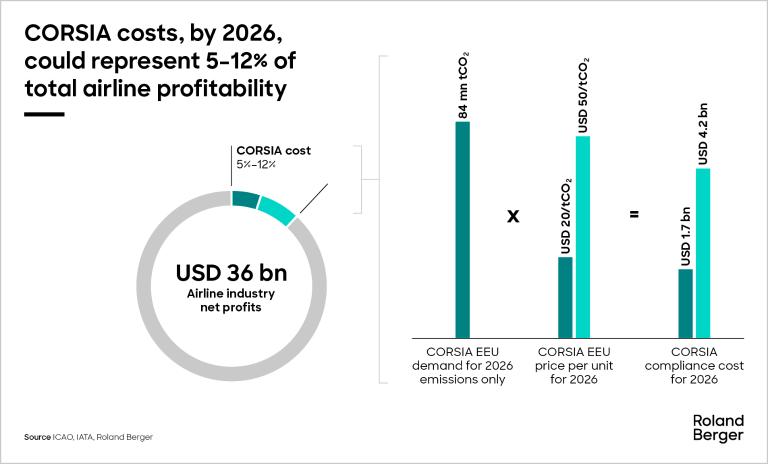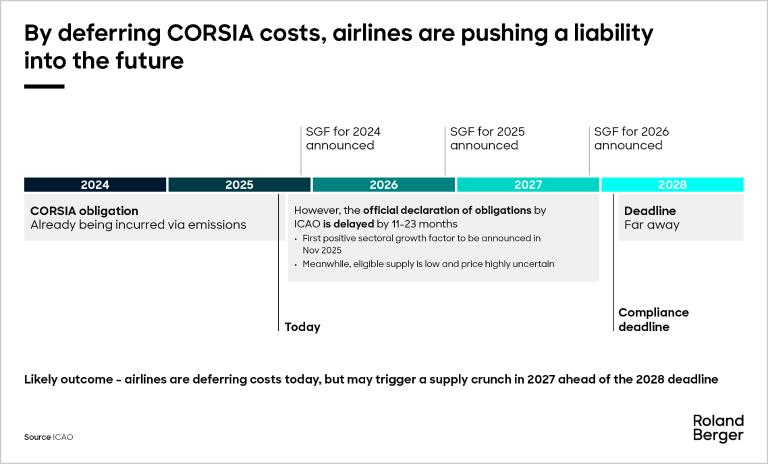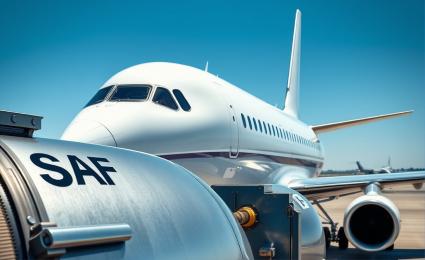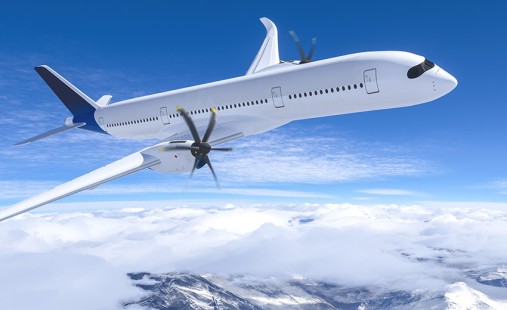Are contrails a solvable problem? A new report from Roland Berger assesses the potential of several solutions, with a particular focus on contrail avoidance.


The CORSIA liability challenge: the dangers of delay
Why are airlines exposed to rising costs by ignoring the carbon offsetting scheme?
The aviation industry is growing–but so is its carbon footprint. To address this, the International Civil Aviation Organization (ICAO) has introduced the Carbon Offsetting and Reduction Scheme for International Aviation (CORSIA). This global initiative aims to limit CO₂ emissions from international flights by requiring airlines to offset their emissions using approved carbon credits. However, with the first compliance deadline approaching, many airlines appear unprepared for the financial impact CORSIA could bring.
_image_caption_none-2.jpg?v=1526376)
We estimate that airlines will need around 180 million CORSIA-eligible carbon credits (or Eligible Emission Units, EEUs) during the first phase of the programme (2024–2026). If these units are purchased late–say, in 2027–we predict prices could range from USD 20 to 50 per tonne of CO₂, resulting in an industry-wide cost of USD 3.6 to 9.0 billion. This represents a significant new expense for airlines, potentially cutting into 5–12% of their profits by 2026. Worse still, passing these costs onto customers in a transparent, as-incurred manner will be far from easy.

"The longer airlines wait, the more they risk paying a premium for offsets – and possibly lower-quality ones."
Why are airlines hesitant to act?
Despite the looming deadlines, many airlines are adopting a "wait-and-see" approach to CORSIA . Here are some of the key reasons behind this hesitation:
1. Declining enthusiasm for carbon offsets
Globally, momentum around climate action has slowed, and skepticism towards carbon offsets is rising. The voluntary carbon market, which underpins CORSIA, has faced falling demand and concerns about credibility. This has led to lower offset prices and less urgency for airlines to engage proactively with the scheme.
2. Weak enforcement mechanisms
CORSIA lacks a robust enforcement framework. While ICAO requires airlines to monitor, report, and offset emissions, it has no legal authority to enforce compliance. Enforcement is left to individual member states, most of whom have yet to incorporate CORSIA requirements into domestic law or establish penalties for non-compliance.
3. Unclear timelines
CORSIA’s design does not foster urgency. For each year of emissions, airlines only learn their obligations in November of the following year, creating uncertainty and delays in decision-making. Moreover, the next major deadline—January 2028—still feels distant.

4. Limited supply of eligible offsets
ICAO’s strict rules for eligible offsets have created a supply bottleneck. The current supply of CORSIA-eligible credits is limited to fewer than 16 million (all ART TREES credits from a Guyana REDD+ programme), while we estimate that market demand across CORSIA Phase 1 is expected to be over 180 million credits. In fact, interest in these available credits has been very low, with IATA’s auction in Q4 2024 driving the sale of fewer than 400,000 of them, by 11 airlines.
5. Competing sustainability priorities
Finally, for most airlines, CORSIA is far from being the only sustainability disruption that needs resolving. From sourcing Sustainable Aviation Fuels (SAFs) to managing the cost of carbon (e.g. from EU ETS), airlines are juggling multiple pressures. As a result, CORSIA often ends up taking a backseat in their short-term planning.
The risks of waiting
While delaying action might seem convenient, we at Roland Berger believe that it comes with significant risk:
Hidden financial liabilities
While it may not seem like it, airlines have already begun to incur CORSIA-related costs. It is highly likely for the 2024 sectoral growth factor to be non-zero (to be confirmed in November 2025), and airlines will have to eventually offset a share of all their eligible emissions from 2024. Hence, if airlines have not already started tracking the cost associated with this liability, and booking it as such (or passing it on to their customers), they will, at some point, have to take a hit on their margins to buy the necessary volume of eligible offsets instead — or risk having to either overcharge future customers (B2C), or back-invoice customers for past CORSIA expenses (B2B).
Rising costs over time
The volume of offsets airlines will need to procure will naturally increase as sectoral growth factors and eligible emissions rise. In addition, the dollar value of this liability is further impacted by the price of eligible offsets, which - just in the last 12-18 months - increased by over 10x due to lack of eligible offset supply.
Last-minute supply crunch
Delaying offset purchases until closer to the 2028 deadline could force airlines to buy whatever is available - often at inflated prices and potentially lower quality. In comparison, acting proactively can offer alternatives, such as buying eligible SAF, investing in earlier-stage offset projects, and/or implementing a customer cost pass-through strategy.
Proactively tackling CORSIA compliance
At Roland Berger, we believe airlines should take a proactive approach to CORSIA compliance. This includes tracking financial liabilities early, developing cost pass-through strategies, and sourcing eligible offsets ahead of time to avoid price spikes. By preparing now, airlines can reduce their overall compliance costs and avoid last-minute challenges.
Conclusion
CORSIA compliance is no easy feat. The scheme presents real challenges: uncertain offset costs, limited eligible supply, and reputational risks tied to voluntary offsets. However, procrastination could expose airlines to significant hidden dangers, including the need to purchase lower-quality offsets at a premium. Instead, we advise developing a proactive CORSIA compliance strategy–starting now.
We would like to thank Anirud Gupta for co-writing this article. Connect with Anirud Gupta on LinkedIn .

_person_144.png?v=770441)








_person_144.png?v=1495835)

